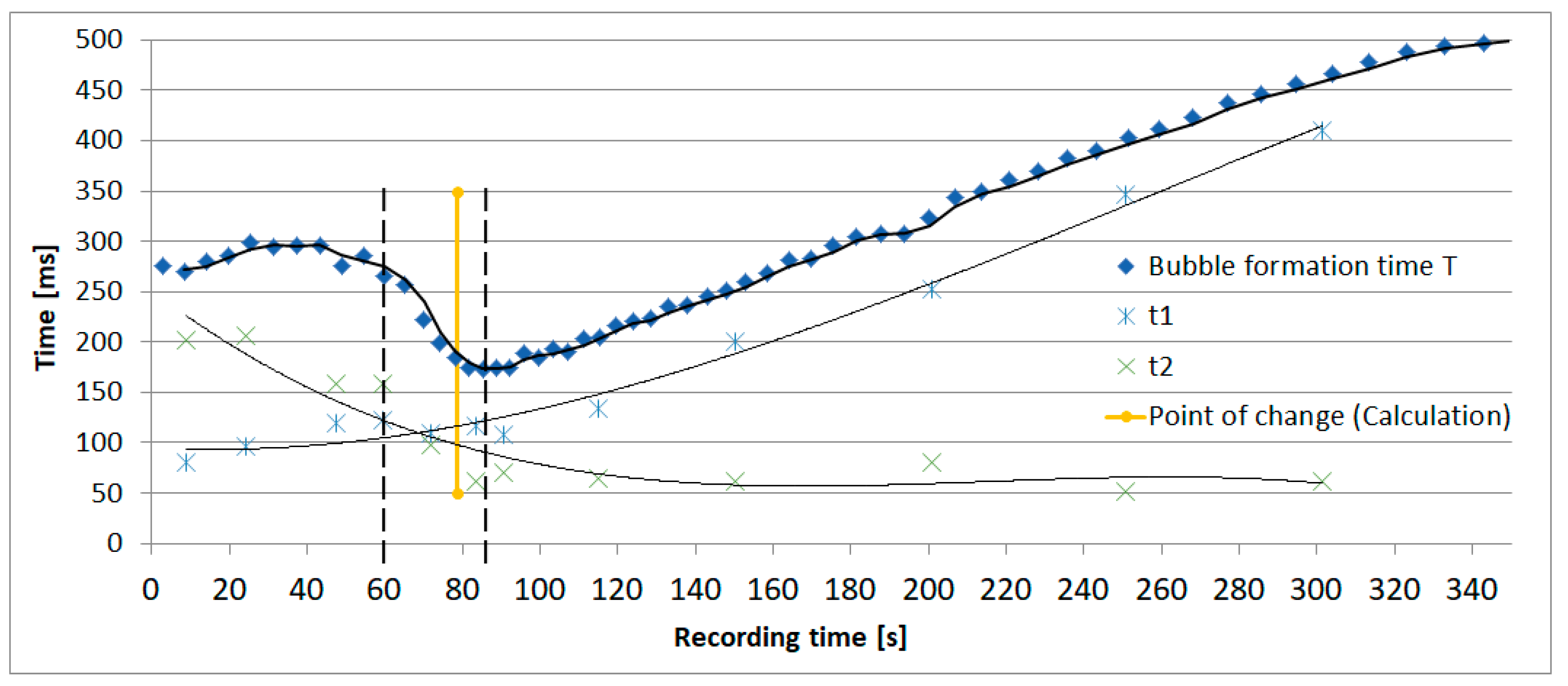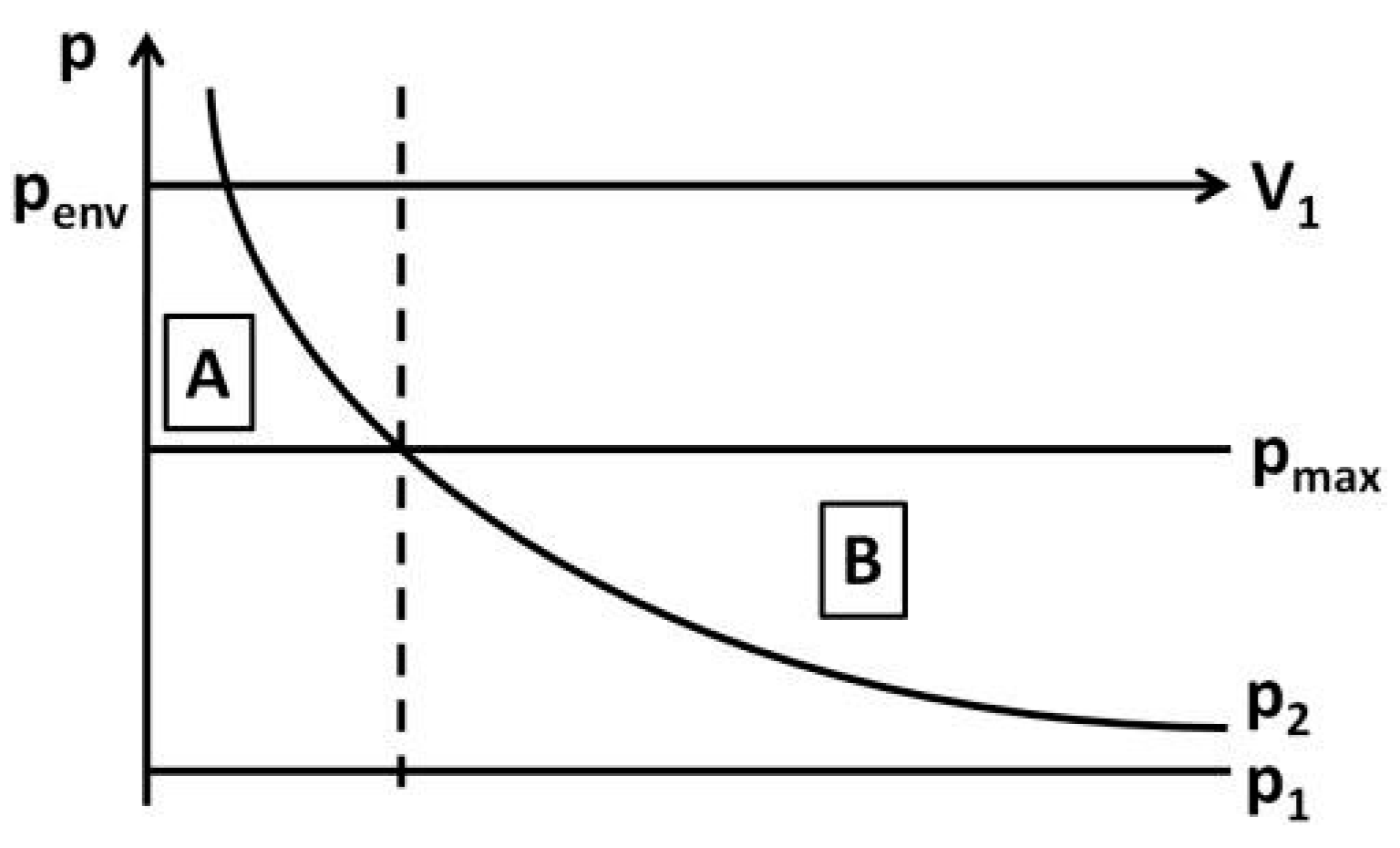Bubble Formation in Droplet Dosing Devices for Liquid Medicine †
Abstract
:1. Introduction
2. Measurement Setup
3. Bubble Formation in Droplet Dosing Devices
4. Analytical Estimation of the Bubble Formation
5. Discussion and Conclusions
Acknowledgments
Conflicts of Interest
References
- Bals, A. Grundlagen der Blasenbildung an Einzelporen und Lochplatten. Chemie Ingenieur Technik 2002, 74, 337–344. [Google Scholar] [CrossRef]
- Kumar, R.; Kuloor, N.K. The formation of bubbles and drops. Adv. Chem. Eng. 1970, 8, 255–368. [Google Scholar] [CrossRef]
- Gaddis, E.S.; Vogelpohl, A. Bubble formation in quiescent liquids under constant flow conditions. Chem. Eng. Sci. 1986, 41, 97–105. [Google Scholar] [CrossRef]
- Hering, E.; Martin, R.; Stohrer, M. Physik für Ingenieure, 10th ed.; Springer: Berlin/Heidelberg, Germany, 2007; pp. 175–266. [Google Scholar]



Publisher’s Note: MDPI stays neutral with regard to jurisdictional claims in published maps and institutional affiliations. |
© 2018 by the authors. Licensee MDPI, Basel, Switzerland. This article is an open access article distributed under the terms and conditions of the Creative Commons Attribution (CC BY) license (https://creativecommons.org/licenses/by/4.0/).
Share and Cite
Hummel, S.; Haub, M.; Bogner, M.; Sandmaier, H. Bubble Formation in Droplet Dosing Devices for Liquid Medicine. Proceedings 2018, 2, 747. https://doi.org/10.3390/proceedings2130747
Hummel S, Haub M, Bogner M, Sandmaier H. Bubble Formation in Droplet Dosing Devices for Liquid Medicine. Proceedings. 2018; 2(13):747. https://doi.org/10.3390/proceedings2130747
Chicago/Turabian StyleHummel, Sebastian, Michael Haub, Martin Bogner, and Hermann Sandmaier. 2018. "Bubble Formation in Droplet Dosing Devices for Liquid Medicine" Proceedings 2, no. 13: 747. https://doi.org/10.3390/proceedings2130747



